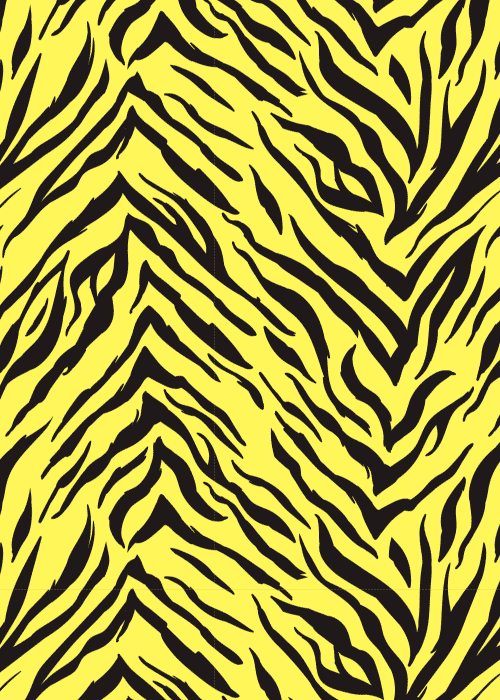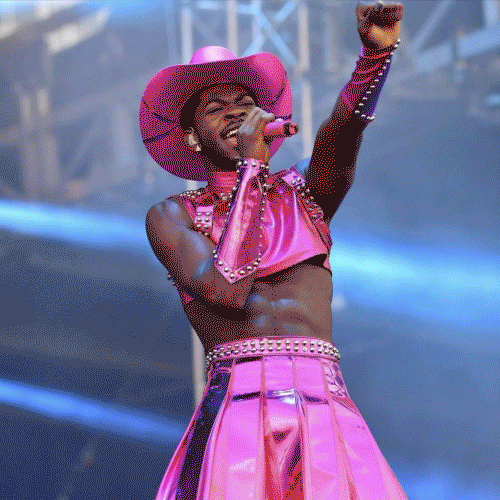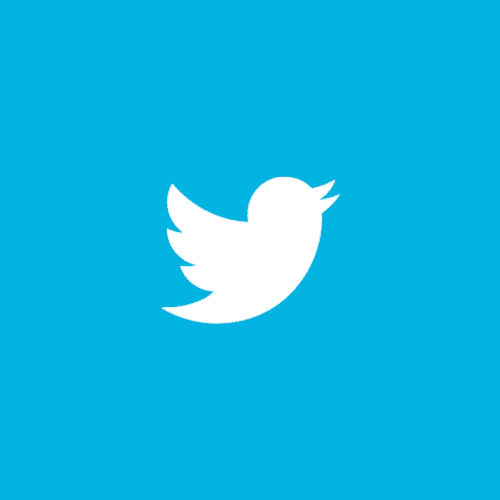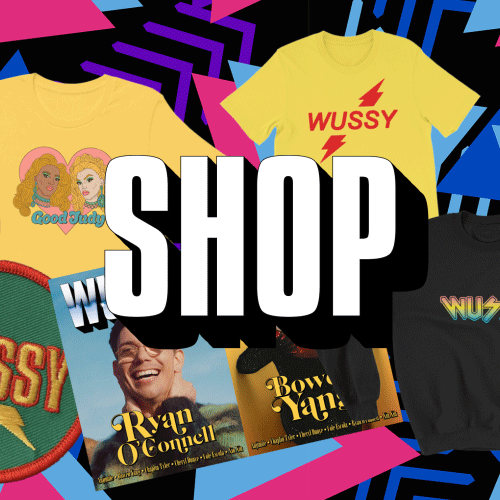WUSSY Talk: Walter S. Heape, collage artist
We recently sat down with collage artist, Walter S. Heape, to talk about his work and the changing landscape of the Atlanta queer scene.
Q: You mention in your artist statement your history in the Atlanta club kid scene of the late 90s. Could you talk about that scene in detail? Any specific memories?
A: In 1989 I was a photography student at the Atlanta College of Art. I grew up in Greenville, SC, but left for college when i was 18.
When I got to Atlanta, Weekends was the first club I was able to get into (with a fake ID). I finally heard the music I’d been listening to for the past few years in my bedroom playing for a larger audience, with all of the throbbing energy that comes with a club atmosphere. I was transfixed, inspired, empowered. My ACA friends and I soon met David Richardson and some of the other kids on the scene. Everyone was toying with gender and this idea of a “global village” with the advent of the internet. A lot of us came from counterculture movements in our respective small southern towns originally, punk and goth kids too scared to come out at home but unapologetically queer once we found ourselves in Atlanta. Add the terror of what was happening in the gay community with HIV and AIDS, and a sort of dark escapism emerged. This meshed nicely with the music of the time—industrial and early techno were the perfect soundtrack for our creative angst. We were queer, but we were also punkish and artistic. We didn’t necessarily feel at home in [the] larger gay culture either. Theme parties started (Ladyfingers’ are legendary), muses were born (Mantis & Butterfly), and performance art crept in (Dysfunksha tossing stinkbombs on the dance floor at Velvet and slipping out a side door). Jon Arge was there looking dapper and documenting it all with his Polaroid. We were young, we were weird, and, for once, the playground belonged to us.
Q: You are a prolific collagist. Could you elaborate on your process, and how you got there?
A: I’ve spent a long time working as a commercial artist, as a Graphic Designer, and neglecting the work that I really want to do, my personal work. I started the collage project as way to dump ideas, to look at the past, to look at my influences over the years, and to search for themes in my life. I’ve used Photoshop in my commercial work for twenty-five years now, so it was a natural choice. I started with traditional collage and set up a space to work at home, but my life was very busy then, and I couldn’t find time to sit at a table for four hours a day to work. Maybe I didn’t want to, either. I’m impatient, and working digitally is both quick and a way for me to catch fleeting ideas and sort them out while they’re still clear. The collages are manipulated in Photoshop and are a combination of my own personal photography and found imagery. My background is in photography and printmaking, but I’ve been making collages since I was fourteen. I’m focusing on slowing down the process now, looking at working with fabrics, and trying to settle in on a central focus for a bigger project.
Q: Could you talk about some of your influences, especially with regard to your work on gender fluidity? We noticed pop icons like Divine and Robyn, and Atlanta icons such as David Richardson.
A: I had a friend when I was little whose mother was a big fan of dress-up, and didn’t enforce gender boundaries on us. I was being tormented at school for being effeminate and skinny, so I became obsessed with being someone else. I also identified strongly with others who became someone else. Music has always been my biggest muse, and the electronic music of the 1980s was a starting point. I was listening to Cabaret Voltaire and Kraftwerk obsessively while watching gender-bending artists like Steve Strange of Visage and Klaus Nomi late at night on MTV and USA’s Night Flight. I was also surrounded by close friends who loved nature, psychedelic drugs, and more pastoral sounds. I loved everything 4AD and R.E.M. New Order remains a favorite, and there’s always been a sort-of queerness to them. I was exposed to the films of John Waters at age sixteen, and was overwhelmed by Divine. These characters that didn’t conform, and reveled in their non-conformity, sent up a battle cry inside me.
I love the work of British director Mike Leigh—I’m a big champion of the underdog, and 80s council estates in the UK, as well as Soviet-era imagery, creep into my work as well. Cindy Sherman blew my mind with her untitled film stills and subsequent work—she made me want to be a photographer. I also love Gregory Crewdson. I love fashion; I just saw the McQueen retrospective in London and am still processing that. These days I love Robyn, The Knife, and the unabashed sexuality and humor of Peaches.
David Richardson has always been an influence and a good friend for twenty-five years. We’ve collaborated on some of these images oldschool style, in his living room with his partner holding up a reflector while I shoot photos. David gave me a love of bad arthouse cinema, and the banter between old friends while watching them is the best part.
Q: How does your work in collage reflect concerns of gender fluidity?
A: There’s been a pull in me between something synthetic, and feminine, and something earthy, and masculine, since I was a kid. I’ve landed in a kind of boyish presentation naturally, I feel, but I’ve always celebrated the outward display of that pull in others. It fascinates me, perhaps because it didn’t necessarily work out that way for me in the end—partially out of fear—but I find it beautiful, expressive, and genuine. Anyone who dares to let the inside out is a hero in my opinion. We all have other selves inside us. I trust anyone who is emotionally open and honest about that.
Q: How do you think Atlanta queer culture has changed since your days as a club kid? What have you noticed has improved, or what seems to be missing?
A: I was in Stockholm in the early 2000s, begging Swedish friends to take me to the gay bars. Finally, a friend said, “Walter, we do not really have that here. The gay bars are really more for tourists. You would be very bored.” I was floored, and after some questioning one of them said, “You see. . . We do not really need that here.” What he was essentially saying was that being gay was such a non-issue, the popularity of gay bars had declined over the years, and gays had blended in more with the general population. I think that’s one way Atlanta has changed for the better. We certainly have a slew of gay bars still, but the cultural tone has shifted [to the point] that being gay is less of an issue here than it was back in the late 80s and early 90s. I think we may be headed in the same direction as Sweden down the road. I can’t say that I have strong feelings either way. I would love to blend in, but I’ll certainly miss the fun of being on the outskirts, fucking with everybody. That’s the kid in me though, the scared eighteen-year-old from South Carolina. I’m 43 now. Drag has changed so much, too. [RuPaul’s] Drag Race has brought the art form to the masses. It’s a different animal. There’s a lot of technique in drag now, and less escapism. I do love what the kids at The Other Show are doing. It reminds me of all of us kids back then.
For more of Walter's work, check out his website and follow his Instagram @isocollage.
Archive
- September 2025
- August 2025
- May 2025
- February 2025
- November 2024
- October 2024
- September 2024
- August 2024
- July 2024
- June 2024
- May 2024
- April 2024
- October 2023
- July 2023
- June 2023
- May 2023
- April 2023
- March 2023
- February 2023
- June 2022
- April 2022
- March 2022
- January 2022
- December 2021
- October 2021
- September 2021
- August 2021
- July 2021
- June 2021
- May 2021
- April 2021
- March 2021
- February 2021
- January 2021
- December 2020
- October 2020
- September 2020
- August 2020
- July 2020
- June 2020
- May 2020
- April 2020
- March 2020
- February 2020
- January 2020
- December 2019
- November 2019
- October 2019
- September 2019
- August 2019
- July 2019
- June 2019
- May 2019
- April 2019
- March 2019
- February 2019
- January 2019
- December 2018
- November 2018
- October 2018
- September 2018
- August 2018
- July 2018
- June 2018
- May 2018
- April 2018
- March 2018
- February 2018
- January 2018
- December 2017
- November 2017
- October 2017
- September 2017
- August 2017
- July 2017
- June 2017
- May 2017
- April 2017
- March 2017
- February 2017
- January 2017
- December 2015
- November 2015
- October 2015
- September 2015
- August 2015
- July 2015
- June 2015
- May 2015
- April 2015













